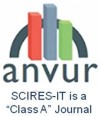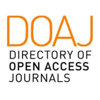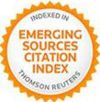Abstract
It
In questo contributo si assume il concetto di ‘Smart City’ come paradigma per sottolineare l’importanza che riveste l’Information Technology (IT) di prima e seconda generazione ai fini del miglioramento del profilo competitivo di una città, soprattutto per ciò che riguarda il patrimonio culturale in essa contenuto. Si estende così il costrutto di William Mitchell dalla città al patrimonio culturale precisando, anche attraverso alcune esemplificazioni, come le Smart IT modifichino profondamente le modalità di trasmissione, acquisizione e produzione della conoscenza trasformando quest’ultima in un fattore di sviluppo economico, sociale e culturale. Non secondariamente esse contribuiscono alla soluzione di problemi tipici dei processi connessi al lifecycle dei beni culturali: la loro conservazione, fruizione, comunicazione e gestione, nonché quelli connessi alla grande quantità di dati e alla loro eterogeneità. Infine, i nuovi sistemi come l’Internet of Things o il fenomeno dello User Generated Content permettono di concepire i beni culturali come ‘smart cultural objects’ e la generazione di conoscenza da parte degli utenti. Tutto ciò, se da una parte amplifica le possibilità di interazione tra soggetti e oggetti della conoscenza, dall’altra ne modifica radicalmente le modalità. Questo deve sollecitare le Università, le Istituzioni culturali e le Imprese a collaborare, nel prossimo futuro, sugli usi possibili delle soluzioni tecnologiche prospettate, in vista dell’affermazione di una più consapevole e partecipata cultura della sostenibilità del nostro patrimonio culturale.
En
This contribution takes the concept of ' Smart City ' as a paradigm in order to underline the importance of first and second generation of Information Technology (IT) for the purpose of improving the competitiveness of a city, especially for what concerns its Cultural Heritage (CH). We extends so the construct of William Mitchell from the city to Heritage, specifying, through some examples, how the technologies change deeply the mode of transmission, acquisition and production of knowledge by transforming it into a factor of economic, social and cultural development. Not secondarily Smart IT contribute to solving typical problems related to the lifecycle processes of CH: their conservation, use, communication and management, as well as those related to the large amount of data and their heterogeneity. Finally, new systems such as the Internet of Things or the phenomenon of User Generated Content allow you to conceive cultural heritage as 'smart cultural objects' and the generation of knowledge from city-users. All this, amplifies the possibility of interaction between subjects and objects of knowledge, and radically alters the mode of this interaction. This should encourage universities, cultural institutions and companies to collaborate in the near future, on the possible uses of the technological solutions proposed, in view to the establishment of a more informed and participative culture of sustainability of our CH.
Keywords
Full Text:
PDFDOI: http://dx.doi.org/10.2423/i22394303v3n2p1
References
Article Metrics
Metrics powered by PLOS ALM
Refbacks
- There are currently no refbacks.
Copyright (c) 2013 Marco Gaiani, Berta Martini

This work is licensed under a Creative Commons Attribution-NonCommercial-NoDerivatives 4.0 International License.
SCIRES-IT, e-ISSN 2239-4303
Journal founded by Virginia Valzano





